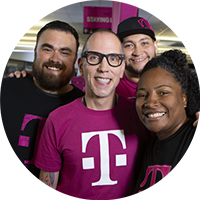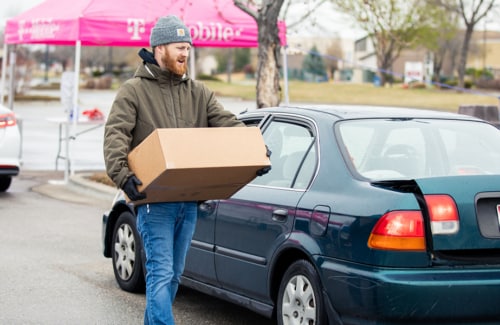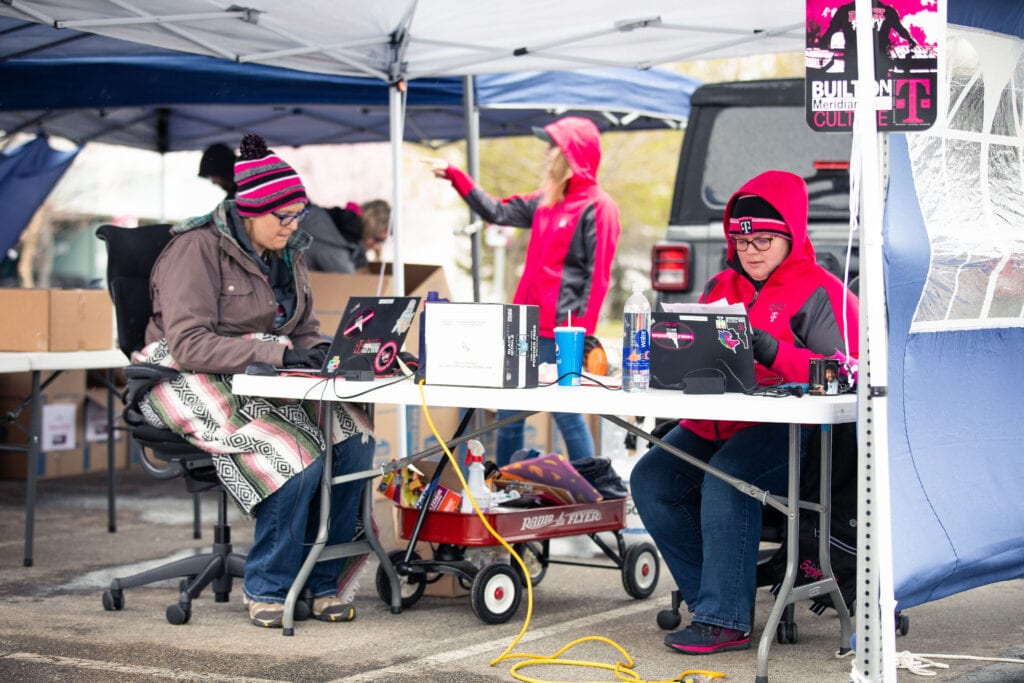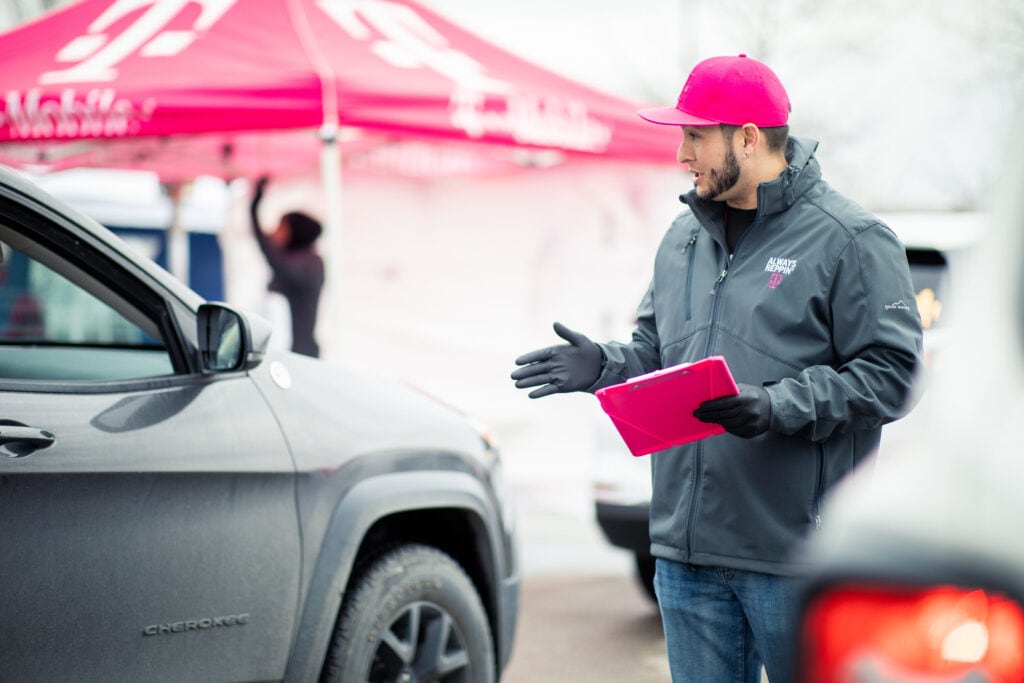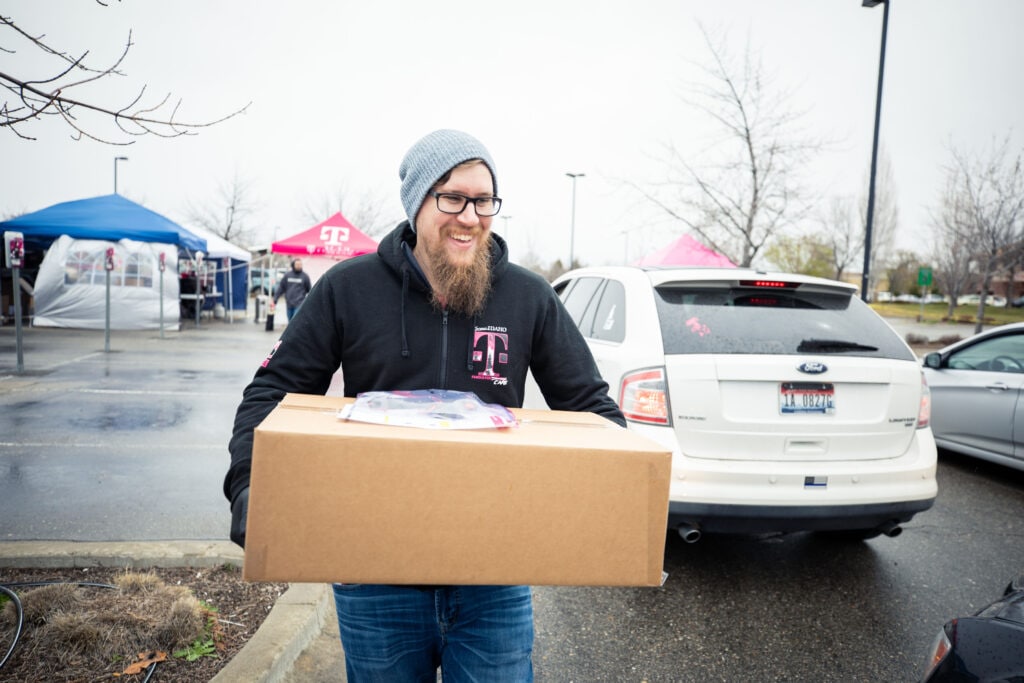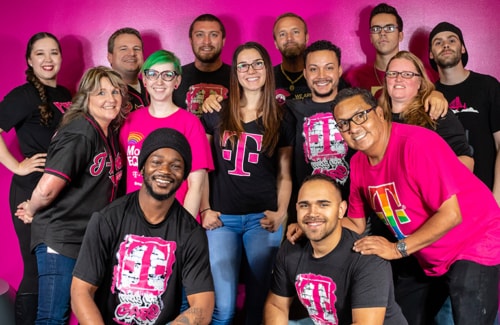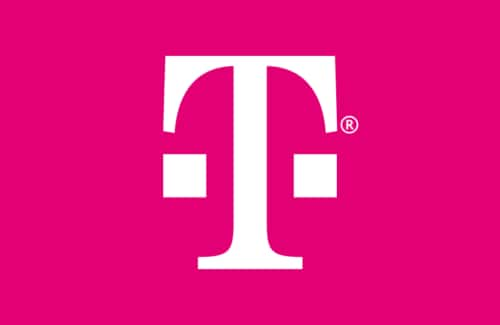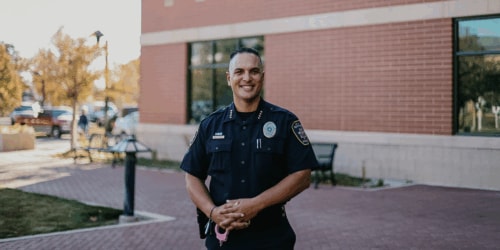Head to any brand’s web page for customer support right now and you’re likely to find a warning: “Wait times are longer than usual.” Try reaching them by phone and you may hear, “We are experiencing unexpectedly high call volumes.” You may even see a warning to not call at all if your need is not “immediate.” With US unemployment at an all-time high and a global economic downturn in progress, consumers are understandably stressed and strained, reaching out to businesses for refunds, cancellations, bill forgiveness, any kind of lifeline. But many are finding they can’t get through to get the help that they need.
On the other side of that equation are dedicated customer care teams, who find themselves on the receiving end of all this customer concern. With a spike in customer care absenteeism across industries came a drastic spike in call wait times, and customer complaints were at all-time highs.
Here at T-Mobile, in March 2020, call wait times went from less than 90 seconds pre-coronavirus to nearly four hours the week that the WHO declared COVID-19 a pandemic. And according to a recent Harvard Business Review article, calls across all kinds of industries that were scored as “difficult” more than doubled to 20% in just two weeks, as issues related to the pandemic rose and people all across the country took to the web and phone for help.
Yet today, T-Mobile customers are receiving the Un-carrier’s industry-leading care as if it’s business as usual. (Hint: It’s not.) We prioritize Care in normal times, and we recognize it’s even more crucial during a pandemic. Reconfiguring our Care experience for our customers was a necessity. But it wasn’t easy.
At T-Mobile, the pandemic hit our Care operations especially hard, because our Care model for postpaid customers — we call it Team of Experts — is uniquely designed for teams to work together in close collaboration. They sit together, meet in person, share best practices and create a single connected experience for dedicated sets of customers. For example, there’s a Team of Experts that serves just Park City, Utah. When residents call, they get the same team every time — people who sit next to each other and are familiar with their area and any issues affecting it. But that model was critically challenged in this new, socially distant world. Working from home meant that we’d lose that in-person collaboration that makes our customers so happy, and it challenged us in other ways, too. All of our technology was hardwired into the call centers, including call routing software. We had a short timeline and big operational problems to solve.
Here at the Un-carrier, we know that wireless connectivity is a lifeline — and there’s never been a more critical time to keep our customers connected — both consumers and businesses. The role our incredible Care teams play is more important than ever, so last month we quickly decided to transition our Care teams out of their call centers and into their own homes.
Between March 11 and March 31, T-Mobile moved almost our entire customer care workforce out of 17 call centers across the US and into a work from home operation. We figured out technology needs and crafted work from home policies for the entire team in just 11 days. Beginning March 22, we moved 6,500+ frontline employees to their new home workspaces, with an additional 5,500+ employees in the following two weeks. That’s over 12,000 employees in just 20 days — and sometimes the timeline was even tighter. In New Mexico, the government-mandated timeline meant we completely transformed two call centers — 1,100 people — to a work from home operation in just 48 hours.
It was no small task. First, we had to make our hardwired infrastructure and technology systems accessible in a work from home setting. This required a faster rollout of a new call routing system, building up server capacity and providing VPN access to every Care employee in short order. In doing so, we made VPN accessible for over 12,000 people in just 20 days. Adding to the challenge, our teams work on desktop computers, so all those desktops, monitors, keyboards, headsets and computer mice — over 60,000 pieces of equipment — were pulled off workstations, sanitized and boxed up into tech kits by site leadership and local IT and support teams. We offered curbside pickup at each site so employees wouldn’t even have to leave their cars.
To keep our newly socially distant teams working together, we swapped in-person collaboration for digital tools like Slack, WebEx and Skype and made sure everyone had home internet and training on the new collaboration tools nearly overnight. And for those reps who couldn’t work from home, we doubled down on cleaning in our Customer Experience Centers. We reconfigured seating to account for social distancing and ensured they had clean, sanitized facilities.
And with the Sprint merger underway as of April 1, 2020, we made sure their frontline internal care employees were included in the work from home transition. Today, all 17 of our U.S. T-Mobile sites are functioning as a work from home experience, along with 92% of our Sprint care teams. That’s almost 14,000 care employees now working from home in just a few short weeks. We executed this massive transition in a ridiculously short time for our Experts AND for the needs of our customers. Doing so dramatically improved the customer experience. Our NPS scores are at record highs! Absenteeism is down from almost 50% at the height of the crisis to 13%. Call wait times are back to normal, under 90 seconds.
And for the most part, we’re delivering customers their same dedicated TEX teams. Un-carrier customers still reach a helpful human every time. We’ve even been able to move some Experts to harder-hit areas. There are no “longer wait times” warnings for great care anywhere at T-Mobile. Every customer can quickly reach us by phone or online. And Care team members work safely from home. Win-win-win.
Keeping people and businesses connected at this unprecedented time is paramount at T-Mobile. Just as important is keeping our hardworking Care teams connected to those customers. I’m incredibly proud of the quick work from across our entire company — from engineering to operations — that enabled us to do just that. None of this would have been possible without the incredible energy and enthusiasm of every Care employee to “get things done the right way,” that is innate to being part of the Un-carrier.
We’re with you and we won’t stop.
For more information on T-Mobile’s world-class Team of Experts, head here.
